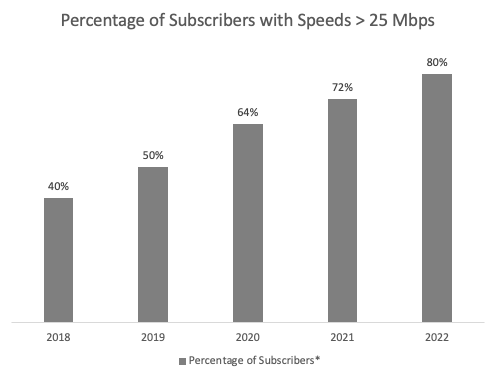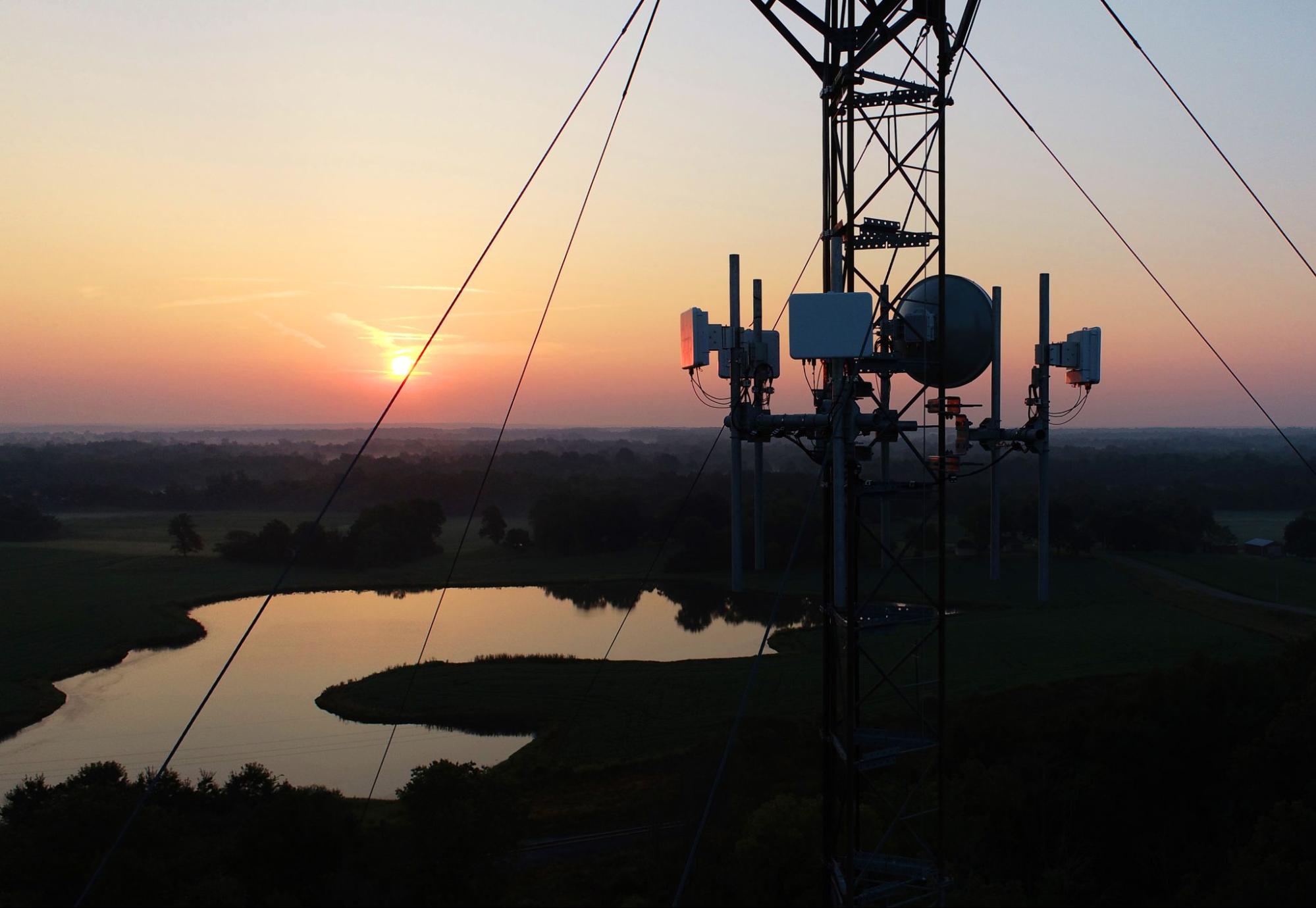Nothing lasts forever, but that doesn’t mean it can’t last a very long time. Tarana’s Gigabit 1 (G1) is a next-generation fixed wireless (ngFWA) platform designed to address the longevity challenges of legacy FWA with:
- Faster speeds
- High capacity and scalability
- Better reliability
- Backward compatibility with new equipment
- Lower total cost of ownership
Speed
A common reason to upgrade a network is the desire to offer faster service plans. In many cases, existing legacy FWA networks were designed for much slower speeds such as 25/3 Mbps. Subscriber preferences are changing however. A survey by the NTCA 2022 Broadband Survey Report found that 80% of subscribers chose plans greater than 25 Mbps in 2022 which was itself an 11% increase over 2021.

* NTCA 2022 Broadband Survey Report
In many cases, networks are being upgraded to a minimum of 100 Mbps in order to comply with federal broadband standards, pushing the need for speed even higher.
G1 is capable of delivering speeds of up to 600 Mbps today (800 Mbps aggregate link capacity) and will support up to 1.6 Gbps of aggregate capacity with an upcoming software update, making it suitable to deliver today’s and tomorrow’s speed requirements.
Capacity and Scalability
In 2022, a typical household used approximately 4 Mbps of peak busy hour throughput, a number that has been growing by 20% year-over-year for the last decade. This has implications for legacy FWA equipment that was not designed with sufficient capacity to handle higher throughput.
For example, a legacy FWA solution that supports 30-50 subscribers today will struggle to handle more than 10 subscribers over the next decade. An operator attempting to solve this problem would either install more radios (including towers, backhaul, etc.) or rip-and-replace the existing equipment with a higher capacity solution after just a few years. Worse, they may end up doing this all over again in just a few years.
With a sector capacity of 2.4 Gbps, G1 has enough capacity to support up to its limit of 256 subscribers at the current 4 Mbps rate and up to 96 subscribers in 10 years when the projected peak busy hour throughput rises to 25 Mbps. Indeed, if it wasn’t for the 256 subscriber limit, G1 has enough capacity to handle up to 600 subscribers at 4 Mbps. These numbers are far beyond what is possible with legacy FWA and are illustrative of the thinking that went into G1’s design to ensure there was plenty of capacity for future needs.
Reliability
Anything that impacts reliability affects operator uptime, reputation, and costs in terms of support calls and troubleshooting. One of the biggest impacts on network performance and reliability is interference. Excessive interference, either self or external, can degrade a link to the point of failure.
G1 incorporates a number of technology breakthroughs that isolate and cancel harmful interference. This design approach not only protects links from current interference but also future-proofs against potential sources of interference that may arise years from now; further extending the network’s service life.
G1 has a proven track record of performing in tough environments, even in cases such as the destruction of a tower. Although we obviously don’t recommend this, it is a testament to the adaptability of ngFWA in adverse conditions.
Backward Compatibility
Another dilemma operators face is the introduction of new equipment, either as a replacement for existing equipment that is no longer in production or is installed for new functionality. With G1, operators are assured of backward compatibility for the next generation of equipment.
A good example of this is the upcoming 6 GHz base node that will be shipping soon. This base node will maintain compatibility with current 5 GHz remote nodes, avoiding the need for costly upgrades and truck rolls; further prolonging equipment lifetime.
Total Cost of Ownership and Return on Investment
The ultimate test of a network is long term cost and how quickly the initial investment is recouped. We did a recent analysis in which we determined that the capital expenditure (capex) for a G1 deployment is 60% cheaper than an all-fiber solution over a 50-year period. For more information, download the entire analysis here.
Summary
Tarana G1 is the ideal choice for operators looking to meet current as well as future demand without requiring a network redesign or rip-and-replace. G1 offers unmatched speed, capacity, reliability, backward compatibility, and investment protection.
For more information on how ngFWA can future-proof your network and reduce the upgrade cycle, check out the full white paper here.
If you just can’t wait to learn more, check out our other blogs or some of our favorite customer links. Or reach out to us at info@taranawireless.com. We’d love to hear from you.
